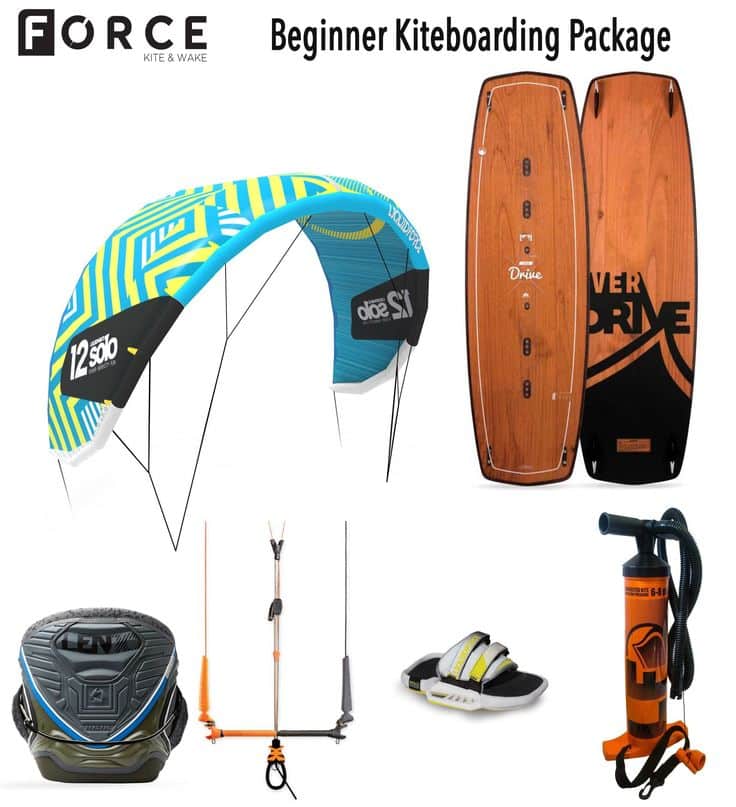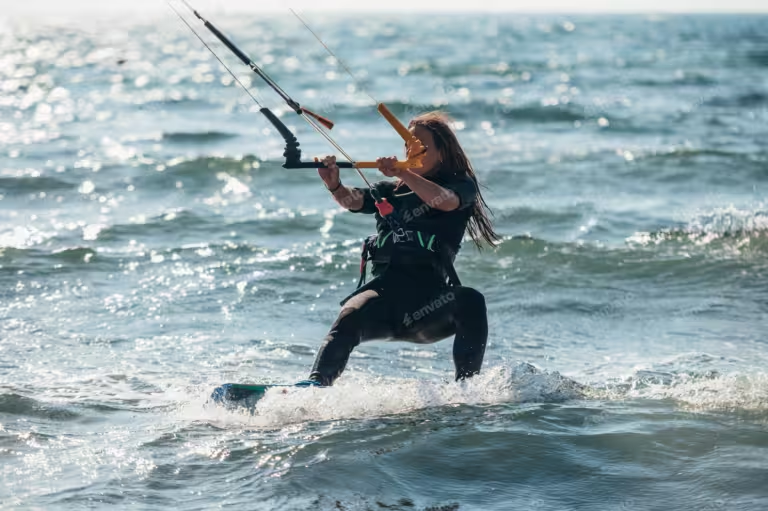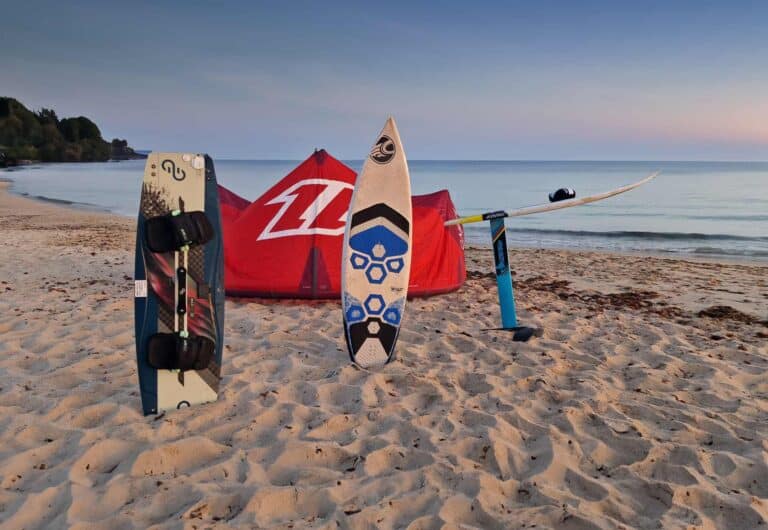The ultimate guide for kitesurfing enthusiasts
Kitesurfing is the most exciting water sport out there – I’m convinced of that. However, the right equipment is essential to make the experience both safe and successful. In this comprehensive guide, you’ll learn everything about the essential gear needed for kitesurfing, along with valuable tips for choosing the best options to suit your needs. Whether you’re a beginner or an advanced kitesurfer, here you’ll find all the relevant information to help you select the right equipment and stay safe on the water.


A kite is the central element in kitesurfing, as it captures the wind and generates the necessary pull to propel the surfer across the water. Choosing the right kite is therefore essential for your kitesurfing experience.
Choosing the right kite depends on several factors:

The kite bar is the kite’s control tool, allowing you to steer the kite and regulate its pull. A high-quality kite bar is not only a means of control but also a crucial safety component in kitesurfing.
Most modern kites use a four-line bar, which offers easy handling and good safety features. Five-line bars provide extra stability and are popular among advanced riders.
This mechanism allows you to adjust the kite’s power to match wind conditions and your preferences. An easily accessible trim adjuster is especially important for quick and simple kite adjustments.
An essential safety feature that allows you to immediately detach the kite from your body in an emergency.
The width of the bar should be matched to the size of the kite. Larger kites require wider bars for more precise control.
"A good kite bar is not only a control tool but also a critical safety factor. It should be adjustable, easy to operate, and, above all, reliable to ensure maximum control and safety in all conditions."
Kiteboarding Magazin
There are two main types of kites: foil kites and tube kites. Each has its own advantages and disadvantages, depending on riding style and wind conditions.
These kites are inflatable and consist of multiple air chambers. There are various subtypes, including bow kites, hybrid kites, and C-kites. Bow kites are particularly beginner-friendly, offering excellent depower capability and easy handling. C-kites, on the other hand, provide more precise control and are popular among advanced kitesurfers.
These kites have no inflatable parts, making them lighter and more compact. They offer excellent light wind capabilities and are especially suitable for hydrofoiling. However, they require a bit more experience and skill in handling.
"Bow kites are ideal for beginners due to their safety features and easy handling."
IKO (International Kiteboarding Organization).

The kiteboard is what you stand on while being pulled over the water by the kite. There are different types of boards that vary in shape, size, and purpose.
These symmetrical boards are the most commonly used and are ideal for beginners. They can be ridden in both directions, making learning easier.
These resemble traditional surfboards and are ideal for wave riding. They can only be ridden in one direction, making them especially suitable for downwind rides.
These boards are equipped with a hydrofoil that provides additional lift underwater. This allows them to glide effortlessly even in light wind and over choppy water.
"Twintip boards are best suited for beginners since they can be ridden in both directions."
VDWS (Verband Deutscher Wassersport Schulen).
Choosing the right board depends on your skill level and the intended use:
Larger boards provide more lift and stability, while smaller boards are more maneuverable and agile. The shape and size of the board significantly influence the riding behavior and should therefore be chosen carefully.

Kitesurfing is an exciting yet potentially dangerous sport. Good protective gear safeguards you from injuries and provides the necessary confidence to fully enjoy kitesurfing.
There are two main types of harnesses: seat harnesses and waist harnesses. Seat harnesses provide more support for the lower back and are particularly suitable for beginners. Waist harnesses offer more freedom of movement and are preferred by advanced riders.
The leash connects you to the kite and allows you to release it in case of an emergency. The quick-release mechanism is particularly important for responding quickly in dangerous situations.
A good helmet protects your head from injuries in falls or collisions. Make sure it has a good fit and adequate ventilation.
It provides not only additional buoyancy but also protects the upper body from impacts. A well-fitting life jacket should be snug without restricting movement.
A wetsuit keeps you warm and protects against cold and wind. Depending on the water temperature, you can choose from different thicknesses and styles.
A secure pair of sunglasses protects your eyes from UV radiation and glare. Make sure they fit well and won’t fall off in case of falls.
"A good safety gear is essential. Invest in high-quality helmets and life jackets."
Kitesurfing Magazine
As a beginner, you need a solid basic setup to start kitesurfing safely and successfully. This includes a suitable kite, an appropriate board, and the necessary safety gear.
"For beginners, it is important to get comprehensive advice before purchasing equipment. At kite schools like those in Tarifa, you will not only receive valuable tips but also have the opportunity to test different gear."
Lokale Kiteschule in Tarifa
Choosing the right equipment is crucial for your success in kitesurfing. You should consider the following criteria:
Choosing the right kitesurfing equipment is essential for your experience on the water. From the kite to the board and safety gear, there are many factors to consider. Whether you are a beginner or an experienced kitesurfer, invest in high-quality equipment and seek advice from experts to find the best gear for your needs. With the right equipment, you are well-prepared to fully enjoy kitesurfing.
For more information and detailed guides on each piece of equipment, visit our dedicated blog posts.
With these resources, you are well-informed and can take your kitesurfing experience to the next level.
Have fun on the water!
Click on the posts below to dive deeper.
For you: additional relevant posts:
© 2024 Kiteconnect. All rights reserved.